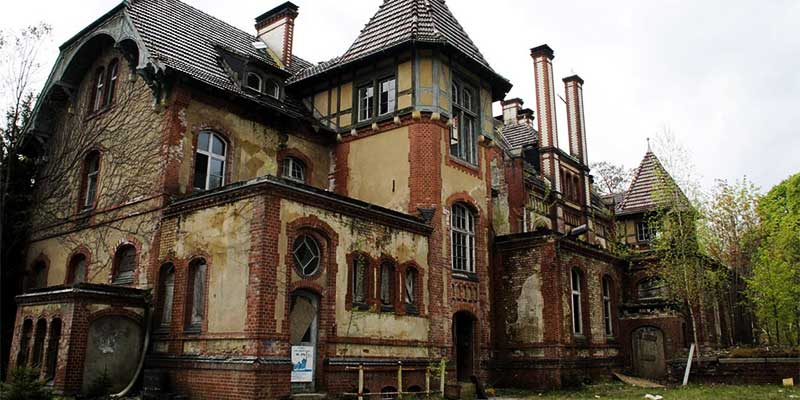Abandoned places are indeed captivating, as they often give us a direct glimpse of what life must have been like in the past. There are some locations that seem as if they are places that time forgot, as if life has ceased to exist.
Nature’s wonders are in abundance. It it leaves us intrigued every time we explore it a bit further.
But it seems THE MAN is on the roll to beat the nature and create even more intriguing destinations on the planet. In the quest to do so, a lot of captivating situates emerged, those were left abandoned for the reasons known for some and unknown for some.
Abandoned places are indeed captivating, as they often give us a direct glimpse of what life must have been like in the past. There are some locations that seem as if they are places that time forgot, as if life has ceased to exist.
We take you to some places in the world, where life existed or wanted to exist in the past, but today, there is no such sign.
Doel Town, Belgium
The town of Doel is 700 years old.
The town has many historic buildings, including the oldest stone windmill of the country (1611), and the only windmill on a seawall. The Baroque Hooghuis (1613) that is associated with the entourage and the holdings of the famous 17th century Antwerp painter, Peter Paul Rubens. Some of the other historical and cultural buildings in the town area are the “Reynard Farm” (De Reinaerthoeve), with a monumental farmhouse and barn. “De Doolen” is a historic school.
“De Putten”, or “The Wells”, is a peat extraction area and has an historically unique 18th-century farmstead and inn site “The Old Hoefyzer”, with one of the last remaining historic barns. But in an effort to expand the nearby harbour of Antwerp, the Belgian government scheduled the town for demolition and forced its residents to move. Subsequently, Doel turned into a ghost town, silently awaiting its demolition. The few citizens who refused to leave took an unusual stand against their predicament, bringing in street artists from all over Europe and encouraging them to turn Doel into their personal canvas as a form of protest. The end result was spectacular, as the walls of the all-but-abandoned town transformed into a life-size living art gallery.
The contrast between the old, historic buildings and the layers of modern graffiti that adorn them is breathtaking. Only 25 residents remain in this post-apocalyptic artistic paradise, and their future in Doel looks bleak.
Demolition is still on the horizon, and they’ll all have to leave once the wrecking ball comes.
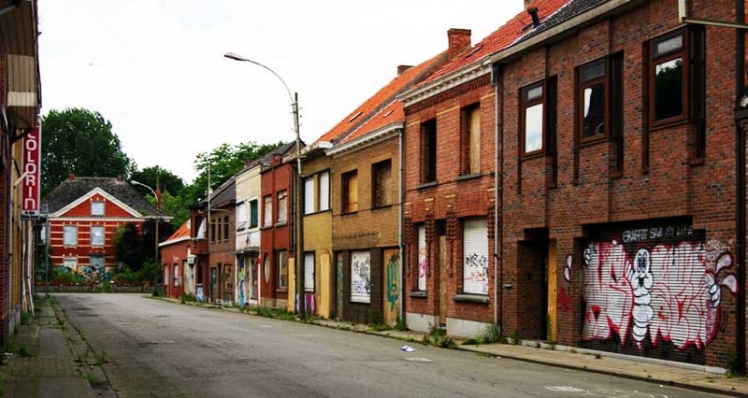
Tkvarcheli Ghost Town, Georgia
This Soviet ghost town is technically located within a country called The Autonomous Republic of Abkhazia, which is only officially recognized by five other countries.
To the rest of the world, these are just the remains of another Georgian town that supplied the Soviet industrial machine. The town was constructed back in the 1940s to supply coal to the Soviets. As such, it was built to last long into the future. However, during the war of independence in the early 1990s, the town fell to Georgian forces. Tkvarcheli was occupied by the Georgians for more than a year, until Abkhaz forces reclaimed the town with the help of the Russians. Sadly for the town, it was too late, as the Soviet era was already in decline.
The population of the town steadily dwindled until it was eventually abandoned for good. Nowadays, it serves as a creepy reminder of life at the height of the Soviet Union.
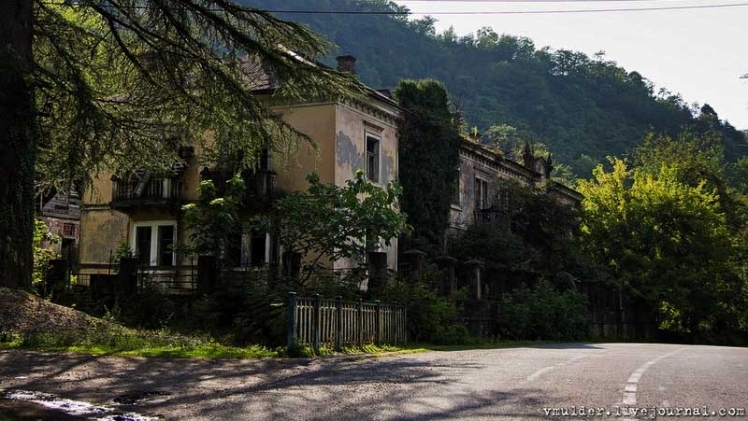
Kitsault, Canada
The town of Kitsault sits in the province of British Columbia, Canada.
It featured more than 100 homes, 200 apartments, a hospital, a shopping mall, a movie theatre, a sports centre, and a bank. What more could you ask for this far up north? The only missing thing is the people. The town formed in 1979 around the steel production industry after a molybdenum source was found nearby. For a while, all was well, but the town’s fate was sealed when the price of molybdenum crashed. As a result, the mine was shut down, and by 1983, Kitsault had turned into a ghost town almost overnight. The town may possibly have found a saving grace, however, in the form of an entrepreneur who bought the place for $5 million in 2004.
He hopes to resurrect the town from its slumber, but only time will tell if the plan is successful. I would love to travel there once its up and about. Who wouldn’t love to see a place that came back form the dead.
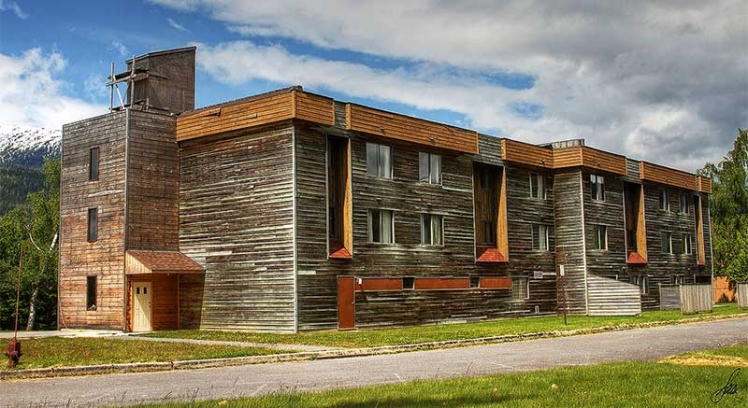
The Buzludzha Monument, Bulgaria
Although at first glance, this structure looks like a giant concrete saucer on top of a mountain, Buzludzha is actually a monument dedicated to communism.
The story behind its inception goes all the way back to 1891, when Bulgaria’s socialist faction met on this exact spot to discuss Bulgaria’s future. Construction began in 1974, and the building was richly decorated with an abundance of Bulgarian and Soviet symbols, including a series of colourful mosaic frescoes on the walls. Perhaps the most impressive feature of the Buzludzha Monument is the colossal hammer and sickle in the middle of the dome ceiling. Sadly, this beautiful building eventually fell to squalor, as the Bulgarian communist party disbanded following a revolution in 1989.
Ownership of the monument was transferred to the government, which simply sealed off the main entrance and left it to be ravaged by vandalism and the elements. I hope it comes back to life someday, somehow.
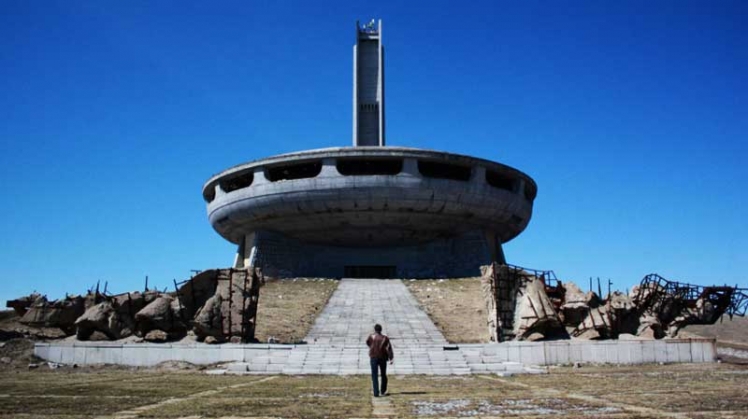
The Cinema At The End Of The World
In the middle of the Egypt’s Sinai Peninsula, a left off the highway asphalt near Sharm el-Sheikh, dipped deep into the desert hills, lies a mysterious cinema that never saw an audience.
The Seventh Art Cinema. Information about this place is very scarce, and it leaves us with more questions than answers. The oddly situated setup was built by a French film buff named Diynn Eadel in the 1990s. Somehow, Eadel managed to secure the necessary building permits and convinced Parisian investors to buy seats and projectors from the old theatres of Cairo.
The resulting arrangement, which would seat 700 people, sadly never saw an opening night, and no one seems to know why. The theatre might have gone unnoticed for years had it not gathered attention from the media recently after it was vandalized and destroyed, most likely for scrap metal.
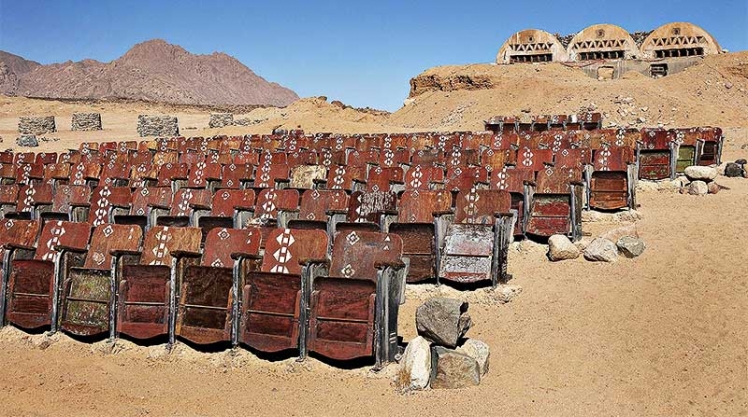
Salton Riviera, California
Looking as if it came straight out of a post-apocalyptic world, the Salton Riviera is one of the most awe-inspiring locations on Earth.
It was built around the Salton Sea, the largest body of water in California, which was amazingly created by accident when a flood poured in from the Colorado River over the course of two years at the turn of the century. Many thought that the flood water would eventually dry out, but years went by seemingly without a drop of evaporation. Developers soon recognized the opportunity the lake presented and built a full-fledged resort upon it, advertised as the “Miracle in the Desert.” The Salton Sea, as it had been named, became the French Riviera of California.
Tourists flocked to the resort from all over the country, and many even settled down in a place that had once been uninhabitable desert. However, this paradise would not last forever. Since the lake was only fed by agricultural runoff, the water became increasingly saltier over the years. Millions of dead fish floated to the surface of the lake, whose white sandy beaches were soon covered in their bones. All the tourists fled from the town, which got overpowered by the stench of rotten fish.
Almost overnight, the Salton Riviera was abandoned, left to become the toxic wasteland that it is today.
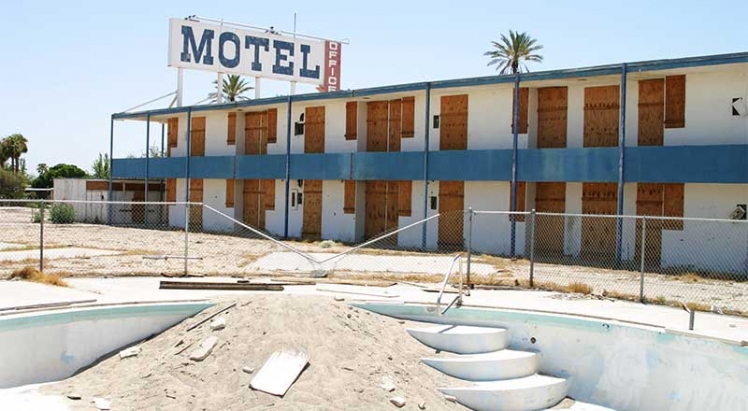
In the hope that some day these places may start to see the signs of life again, we move forward to some more unexplored places on the planet.
Will bring them to you soon.

